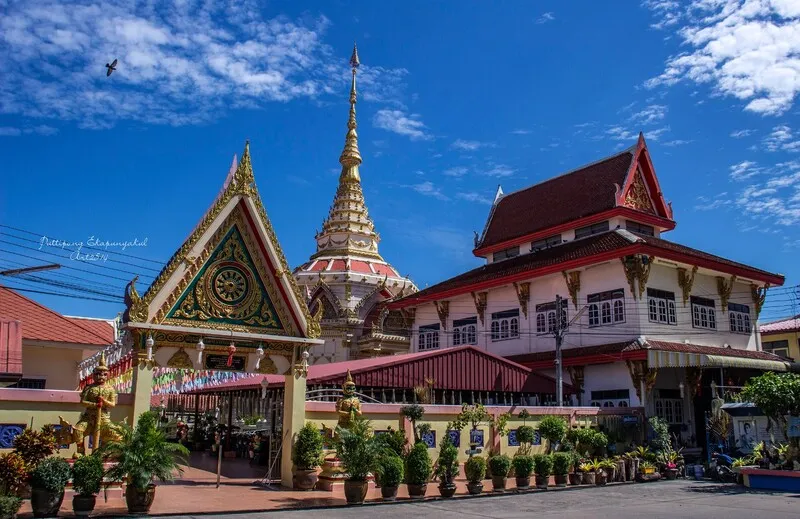Wat Tuk Ta

Rating: 3.1/5 (7 votes)
Nakhon Pathom attractions
Attractions in Thailand
Operating day: daily
Operating time: 08.00 - 17.00
Wat Tuk Ta originally named Wat Phithai Tharam Prasit, is located in Bang Krabao Subdistrict, Nakhon Chai Si District, Nakhon Pathom Province, covering an area of 21 rai, 1 ngan, and 64 square wah. The temple was surveyed by archaeologists from the Fine Arts Department and is believed to have been established around the year 1580 (during the Ayutthaya period), reflecting its historical and religious significance in the local area.
The name "Wat Tuk Ta" holds symbolic importance due to the presence of a pair of wooden dolls carved from teak. These dolls resemble the figure of Phra Lor with fighting chickens. The first doll holds a chicken in its right hand and a bag of money in its left, while the second doll holds a chicken in its left hand and a chakra in its right hand. This reflects local beliefs and artistic devotion unique to the area. It is also believed that the temple was originally named "Wat Nai," as it was situated behind Wat Klang Bang Kaeo, which is the origin of its former name.
Wat Tuk Ta features several important structures, including the Ubosot (ordination hall), Vihara (hall), Phra Hall, and monk's quarters. These buildings showcase the temple’s prosperity in terms of religion and Buddhist practice. To the northeast of the temple, there is the Tuk Ta School, which helps expand Buddhist education and trains people in the local community.
Ubosot: The old Ubosot of Wat Tuk Ta contains a stone boundary marker, or Sema, which holds historical value. This Sema resembles those used in the Ayutthaya period, linking Wat Tuk Ta to Thailand's historical heritage.
Vihara of Phra U Thong: This Vihara was renovated to house Phra U Thong, a Buddha statue that retains some features from the Ayutthaya period, although it has been restored over time to preserve its integrity.
Phra Hall: Inside the Phra Hall, there is a Buddha statue in the standing posture of the Phang Ham Samut (the posture of subduing the ocean), which is believed to have been created during the Rattanakosin period. This represents the temple’s relationship with art and religious changes over different eras.
Wat Tuk Ta was granted a Wisutkhamasima (a certificate for religious status) in 1935, formally recognizing its religious authority and helping maintain order and structure within the temple. The development of various aspects, such as the renovation of buildings and the management of the Tuk Ta School, reflects the dedication of the monks and the local community to preserving Buddhist teachings.
Wat Tuk Ta holds significant historical, artistic, and religious value. Its preservation of cultural practices and commitment to Buddhist teaching highlights its importance as a symbol of faith and heritage in the local community. Visiting Wat Tuk Ta not only allows one to experience its religious atmosphere but also provides an opportunity to learn about the history and evolution of Thailand’s cultural and religious landscape.
Comment
| Keyword (Advance) |
 Region
Region
|

 Category:
Category:  Group:
Group: